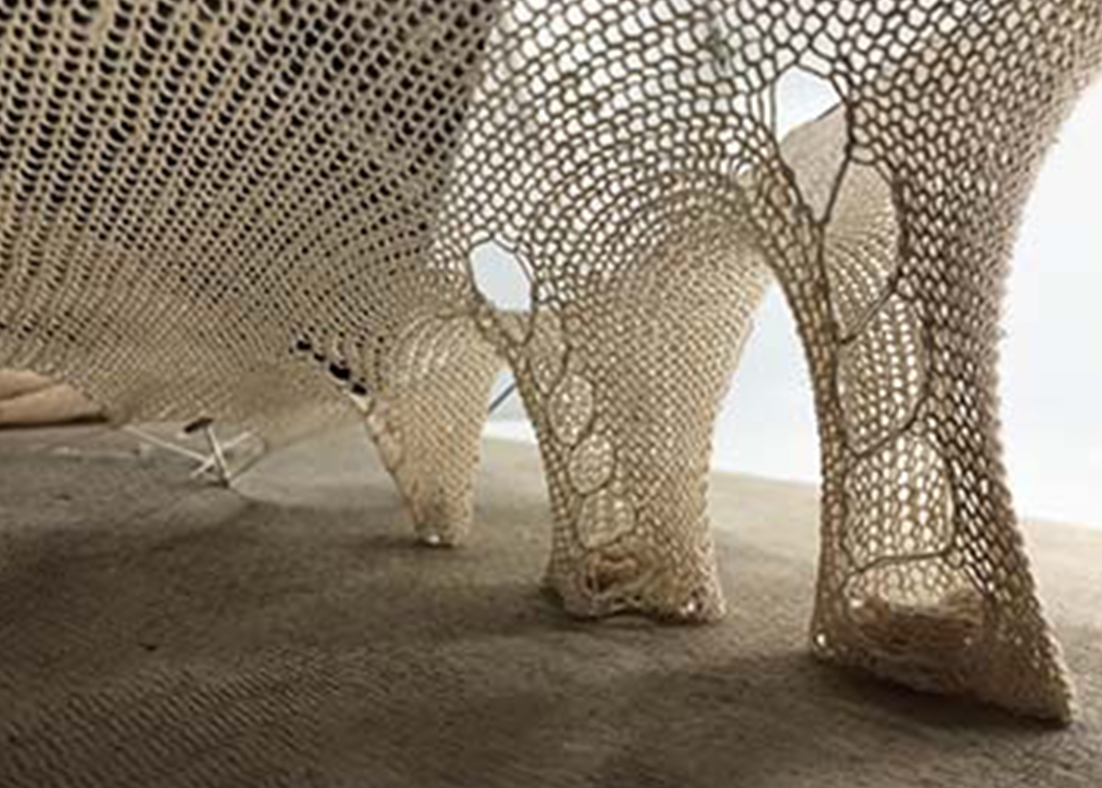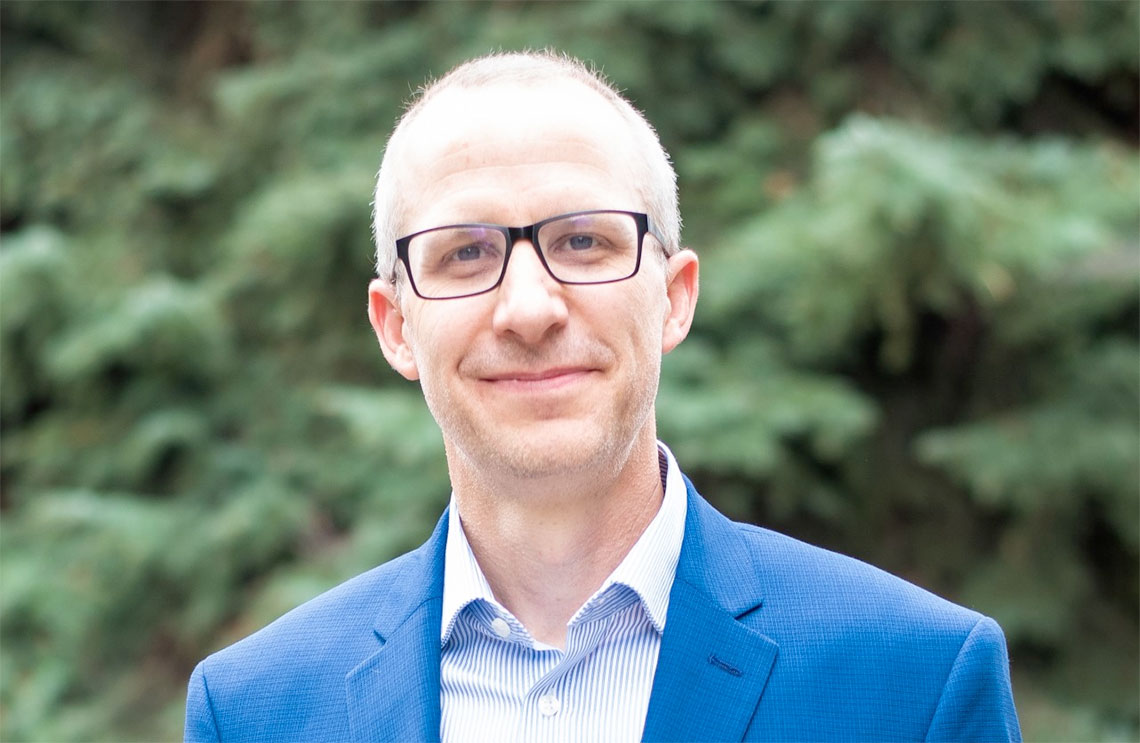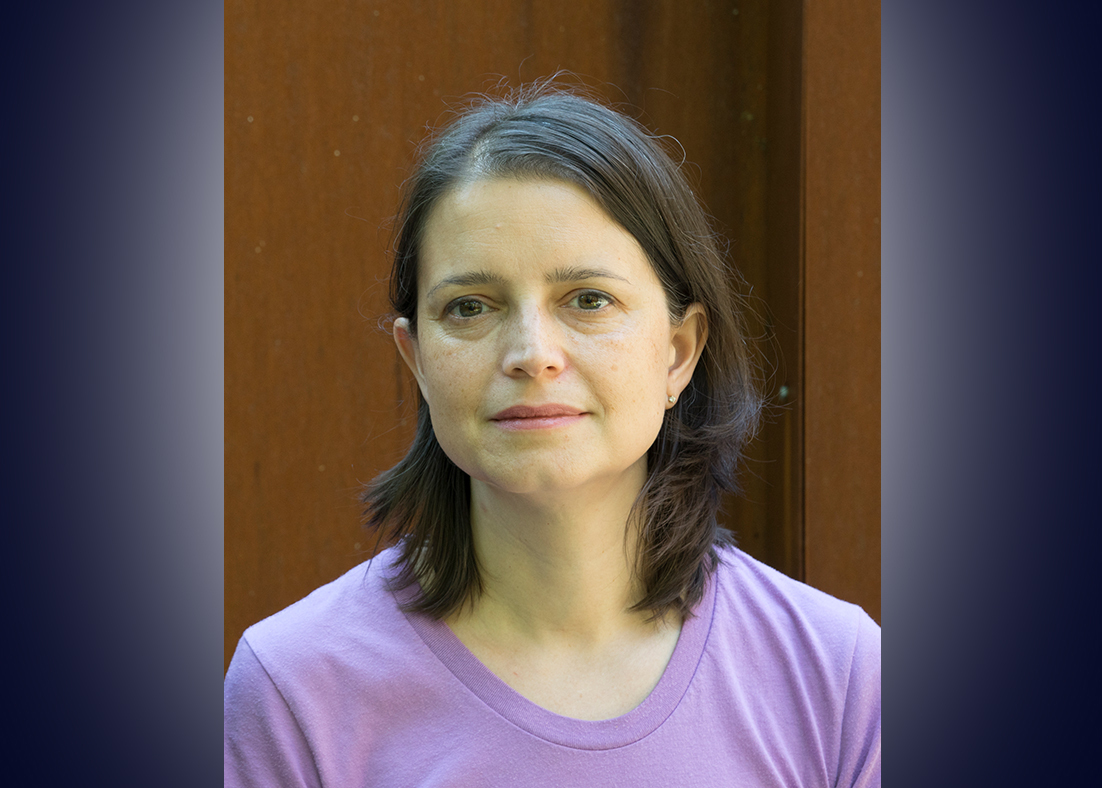Pennsylvania State University
Interdisciplinary Penn State team awarded SOM Foundation Research Prize
UNIVERSITY PARK, Pa. – An interdisciplinary team of Penn State researchers was awarded $40,000 as a recipient of the Skidmore Owings & Merrill (SOM) Foundation 2021 Research Prize for a project that explores mycelium-based and knitted textiles to form a sustainable building material.
Mycelium is part of the fungi kingdom and is the network of threads, called hyphae, from which mushrooms grow.
The title of the team’s winning proposal is titled “MycoKnit: Cultivating Mycelium-Based Composites on Knitted Textiles for Large-Scale Biodegradable Architectural Structures.”
The research is led by co-principal investigators Felecia Davis, associate professor of architecture and director of the Computational Textiles Lab (SOFTLAB) within the Stuckeman Center for Design Computing (SCDC), and Benay Gürsoy, assistant professor of architecture and director of the Form and Matter (ForMat) Lab in the SCDC.
Farzaneh Oghazian and Ali Ghazvinian, architecture doctoral candidates in design computing within the Stuckeman School; John Pecchia, associate research professor in the Department of Plant Pathology and Environmental Microbiology and director of the Mushroom Research Center; and Andre West, associate professor and director of the Zeis Knitting Lab in the Wilson College of Textiles at North Carolina State University, complete the research team.
According to Davis, the funds from the SOM award will be used to offer research stipends for the summer. The grant will also provide tools for mycelium cultivation and knit manufacturing time for a new directed research studio called “MycoKnit,” which will be available to Penn State students in fall 2022.
The creation of “MycoKnit” as a concept began through a collaboration between Davis’s SOFTLAB and Gürsoy’s ForMat Lab.
Davis, and Oghazian, a researcher in the SOFTLAB, had been researching knitted patterns and materials for knitted tension structures. Oghazian has been developing digital algorithms and machine-learning tools to simulate the shape and behaviors of knitted tension structures. West has been working with Davis and Oghazian to produce industrially manufactured knitted samples to test scaling up the work for large-scale tension structures.
Penn State students Ian Danner, an arts education graduate student, and Sophia Craparo, a materials science undergraduate, are assisting with the creation of hand-machined, knitted prototypes and structures for the knitted-base fabric of the MycoKnit.
Ghazvinian, a researcher in the ForMat Lab, has been working with Gürsoy on mycelium-based composites and how they can be used in building structures. Pecchia has been working alongside ForMat lab researchers to cultivate the mycelium-based composites.
“This collaboration will enable us to develop design and fabrication workflows for ‘MycoKnit,’ which are lightweight and biodegradable composite structures,” explained Davis. “The two materials – knit fabric and mycelium – work together to form a tightly meshed composite that has tension from the knitted base and compression from the dried mycelium fungus. The combination can make a strong and lightweight building material.”
Both materials, which were created individually by SOFTLAB and ForMat Lab, respectively, work together to create a lightweight material for biodegradable architectural structures.
“In this research, we will be experimenting growing mycelium-based composites on textiles knitted with organic yarns,” said Gürsoy. “Mycelium will decompose and bind these yarns as it grows, creating a composite system that benefits from both the compressive strength of mycelium and tensile strength of the textiles.”
According to Gürsoy, Mycoknit offers great environmental benefits compared to conventional materials such as concrete and steel, which account for more than 20% of global carbon emissions. She went on to explain that 40% of consumer waste comes from construction and demolition.
“Therefore, there is a need to find sustainable alternatives for building materials that have low-embodied energy and thus a reduced carbon footprint; that are biodegradable and produce no or less construction waste that goes to landfills; and that are renewable, so that they don’t rely on limited resources,” said Gursoy. “Although the use of mycelium-based composites in construction is still in its infancy and is experimental, these materials offer great environmental benefits.”
The collaboration between the experimental materials from both labs will benefit both teams’ research. According to Gürsoy, there is a growing interest in the architectural community with sustainable and biodegradable materials, especially mycelium, and this new research will be of great interest to the communities.
“In recent years, designers and scholars started thinking outside the box to find better options and minimize waste,” explained Ghazvinian. “People have begun using waste-based construction materials like cardboard, reclaimed materials like skis, and other bio-based materials like algae- and coral-based materials.”
“Utilizing something hybrid with knits and mycelium, which is both waste- and bio-based, helps this area to continue growing,” he concluded.
Founded in 1979, the SOM Foundation strives to advance the design profession’s ability to address some of the key topics in society by bringing together and supporting groups and individuals. Its Research Prize is awarded annually to two faculty-led interdisciplinary teams within the United States for original research that contributes a topic outlined by the SOM Foundation. The topic for the 2021 SOM Foundation Research Award was “Envisioning Responsible Relationships with Materiality.”
Learn more via the SOM Foundation website.
University of Arizona
Ryan Smith Named Director of School of Architecture at the University of Arizona
Ryan Smith, a 2002 University of Arizona Bachelor of Architecture alumnus who has served as professor and director of the School of Design and Construction at Washington State University since 2018, has been named the director of the School of Architecture in the College of Architecture, Planning and Landscape Architecture at the University of Arizona. Smith will join the school on July 1, 2022.
“We couldn’t be more pleased that Ryan Smith is returning home to CAPLA,” says Dean Nancy Pollock-Ellwand. “In his 20 years as a built environment teacher, researcher, administrator and leader, Ryan has demonstrated a passion for building a changing world, as well as a sustained excellence in bringing that passion to students, colleagues and the broader community.”
“Ryan is clearly a knowledgeable, empathetic and forward-looking administrator,” says Laura Hollengreen, CAPLA associate dean for academic affairs and chair of the School of Architecture director search committee. “The breadth of his research and teaching experience as a faculty member as well as his substantial administrative experience make Ryan well-suited for this important leadership position.”
“Arizona is home—it is where I learned to design and research, build and make and lovingly seek creative and evidence-based solutions to the built environment,” says Smith. “The Sonoran Desert is a fragile and complex landscape, economy and society, unique in Arizona and in the world. I’m excited about returning to work with the CAPLA community—students, faculty, staff, the profession and many others—as we address the rapidly changing world together.”
Before joining Washington State University, Smith served from 2004 to 2018 as assistant and then associate professor in the School of Architecture at the University of Utah, where he was founder and director of the Integrated Technology in Architecture Center (2009-2015), as well as associate dean for research and community engagement in the College of Architecture and Planning (2015-2018). Smith was an assistant professor in the School of Architecture at the University of Oregon from 2003 to 2004.
Smith’s research focuses on building technology, prefabrication and housing affordability. He has experience in practice and consulting, including MOD X, a research and consulting firm he founded in 2019. He has also served in leadership positions in several educational and professional organizations, including West Region director and board member of the Association of Collegiate Schools of Architecture and founding chair of the National Institute of Building Sciences, Offsite Construction Council in Washington, D.C.
The author or co-author of six books, Smith will receive a PhD in Engineering and the Built Environment from Edinburgh Napier University soon. He also holds an M Arch from University of California, Berkeley.
Smith replaces Robert Miller, who is retiring from the University of Arizona in December 2022.
Pennsylvania State University
Co-founder of award-winning MOS studio to visit the Stuckeman School
UNIVERSITY PARK, Pa. — Hilary Sample, co-founder of the New York-based architecture and design studio MOS and a faculty member in the Graduate School of Architecture, Planning and Preservation at Columbia University, will present a Department of Architecture Kossman Lecture at 12 p.m. on March 30 in the Stuckeman Family Building Jury Space at Penn State.
Sample’s talk, titled “Houses, Schools, Studios, Housing…,” will also be live-streamed by WPSU as part of the Stuckeman School’s Lecture and Exhibit Series.
Established in 2003 by Sample and Michael Meredith, MOS has been recognized with major national and international awards including The Architectural League of New York’s 2008 Emerging Voices award, a Holcim Award in 2014, the 2015 Cooper Hewitt, Smithsonian Design Museum National Design Award in Architecture and the 2020 United States Artists Fellowship.
MOS undertakes projects diverse in scale and type, spanning throughout North America, Europe and Asia. Some of its most recent projects include a collective affordable housing residence in Washington, D.C. (2022); a photographer’s studio (2020); the Petite École in France, a public pavilion for teaching design to children (2019); a housing-focused education center at Laboratorio de Vivienda in Mexico (2018); and a complex of four art studios at the Krabbesholm School in Denmark (2012).
The practice has designed and developed two publications, “Everything All at Once, The Software, Architecture and Videos of MOS” (2013) and “MOS: Selected Works” (2016), and its work is held in the permanent collections of the Museum of Modern Art in New York, the Art Institute of Chicago, Harvard University’s Frances Loeb Library and Columbia University’s Butler Library.
At Columbia, Sample is the IDC Professor of Housing Design and sequence director of the core architecture studios. Prior to her appointment, she taught at the Harvard University Graduate School of Design, Yale School of Art and the University of Toronto. She has held the John G. Williams Teaching Chair at the University of Arkansas and the Reyner Banham Chair at the State University of Buffalo.
Sample’s 2016 book, titled “Maintenance Architecture,” was published by MIT Press.
She holds a bachelor of architecture from Syracuse University and a master of architecture from Princeton University.
The AASL Virtual Conference at Los Angeles
EMPOWER: A MESSAGE FROM THE PRESIDENT
AASL Column, March 2022
Lucy Campbell and Barbara Opar, column editors
Column by Jesse Vestermark, VP/President Elect of the Association of Architecture School Librarians, Architecture & Environmental Design Librarian, California Polytechnic State University
AASL will be meeting alongside ACSA in Los Angeles so we wanted to share details of our sessions. ACSA members are welcome to join us as time permits. All of our conference sessions will be hosted virtually this year.
The Association of Architecture School Librarians Conference Planning Task Force has worked diligently over this roller-coaster of a year to facilitate some wonderful and diverse virtual content for our conference this week: Empower.
This year’s ACSA-prompted theme of Empower, with its inherent emphasis on pro-activity, could not be a better fit for our times. While it’s perennially true that librarians empower through breaking down barriers to information, there are many more ways, both subtle and grand, to empower others on our way to a more sensitive and compassionate society.
As President-Elect, I have ideas for the coming year, and my hope for the conference is that our talks, tours, presentations, discussions and social activities will crystallize one or two tangible actions AASL and I can do to put opportunity, if not also money, towards empowerment. My personal belief is that our empowerment goals should go beyond diversifying local collections (as important as that is), to the ways we present ourselves to our global student bodies, to the tools we use to promote and discover our collections, and especially to building towards representation within our specialized profession so that it mirrors the racial make-up of the national and international communities we serve.
With all that in mind, here’s what to expect from Wednesday to Friday this week!
Day 1
On Wednesday, after a welcome and a few introductions, we’ll hear from Gail Kennard, the leader of LA’s longest-running black architectural firm. Then we move on to presentations on intersecting modalities, a virtual tour of the largest LGBTQ+ archive in the world, and a virtual tour of the works of LA’s most famous black architect, Paul R. Williams. Finally, we’ll finish the day with a mix of icebreakers, discussion and getting to know each other better at our Membership Round Robin.
Day 2
Thursday kicks off with a “zoom coffee” reflecting on silver linings of the last two years before launching into our next set of presentations surrounding the amplification of marginalized voices. Then, it’s on to our annual series of vendor showcases from our generous sponsors. After that, we’ve organized a discussion panel in hopes to assess the present and posit the future of our work in support of AASL’s commitment to anti-racism. And then we finish Day 2 off with a light-hearted game of team Jeopardy, hosted by our “Ministers of Fun” Nicole and David (a sequel to last year’s hit).
Day 3
Friday starts a little earlier with a different type of “em-power-ment”–that of the influence and aesthetics of electrical power across LA’s cityscape. Then, our last cluster of presentations centers on collections and collaboration before AASL President Nilda Sanchez-Rodriguez takes the stage to lead the Annual Membership Meeting. In our final virtual tour of the conference, Southern California Institute of Architecture Librarian Kevin McMahon shares about his institution, which turns 50 this year. Finally, we close things out with another loose “happy hour” session to wind down casually–but in style.
Please share my thanks to our Conference Planning Task Force, in which each member played a unique role in making this the conference you see in our program. Now it’s up to all of us to tap into the power of our small collective and imbue our three days together with discussion and reflection on issues of empowerment. Looking forward to seeing you all!
Jesse Vestermark, Chair, Conference Planning Task Force
Task Force Members:
Stephanie Beene
Lucy Campbell
Cathryn Copper
David Eifler
Janine Henri
Kevin McMahon
Nilda Sanchez-Rodriguez
Nicole Santiago
James Sobczak
Stacy Williams

 Study Architecture
Study Architecture  ProPEL
ProPEL 



